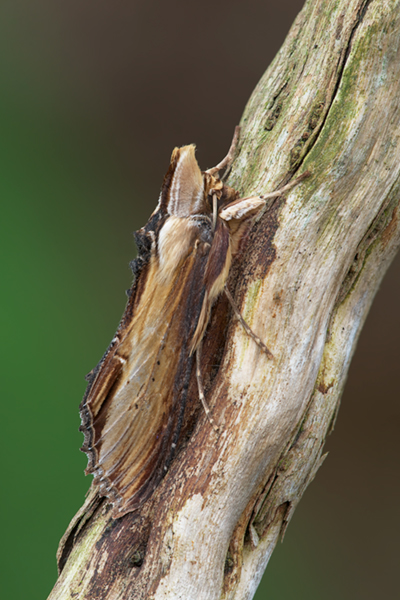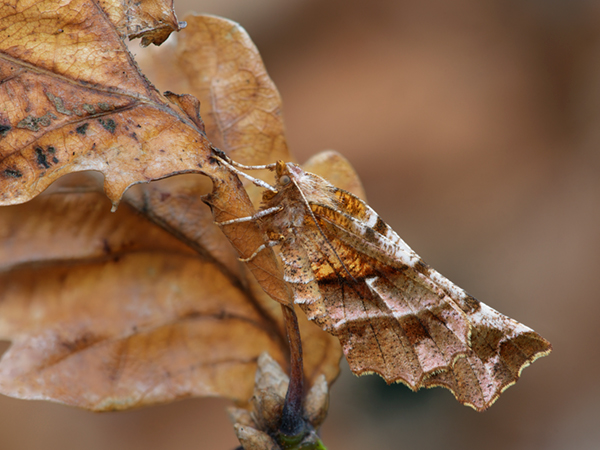April Moths
Nikon D800, 200mm Micro Nikkor lens, ISO 100, fill-flash, tripod.
Things are at last beginning to move despite the wet weather. The Streamer is a moth that I don’t come across that often despite it being reasonably common. It inhabits woodland and shrubby areas where the foodplant grows. It is fairly common throughout most of Britain, but more abundant in the south. The larvae feed on the flowers and leaves of Dog Rose. It rests by day on branches and the trunks of trees.

Mullein Moth Cucullia verbasci
Nikon D800, 200mm Micro Nikkor lens, ISO 100, fill-flash, tripod.
The Mullein, is a curiously-shaped moth and is perhaps more frequently seen in the larval stage than as an adult. The wings are scalloped and have a brown stripe. When at rest it resembles a dead piece of wood or plant stem. It appears in April and is common in England – less so in Wales. The larva feed on different species of Mullein, but has also been observed on Buddleia.

Early Thorn Selenia dentaria
Nikon D3X, 200mm Micro Nikkor lens, ISO 100, fill-flash, tripod.
This is one of my favourite spring moths. I have come across this species many times, but never get tired of photographing the adults. The moth is quite variable and produces two generations – the spring adults tend to be larger and darker, while the autumn generation is usually smaller and paler in colour. Adults rest among leaves and branches of trees and shrubs during the day. Their fragmented colours and scalloped wings make them blend seamlessly into the background. The moth is common throughout Britain and has a preference for woodland and gardens.

